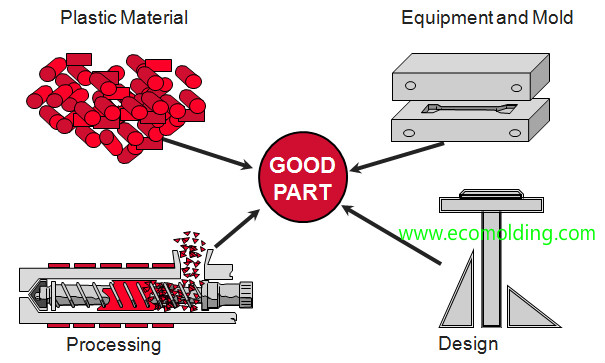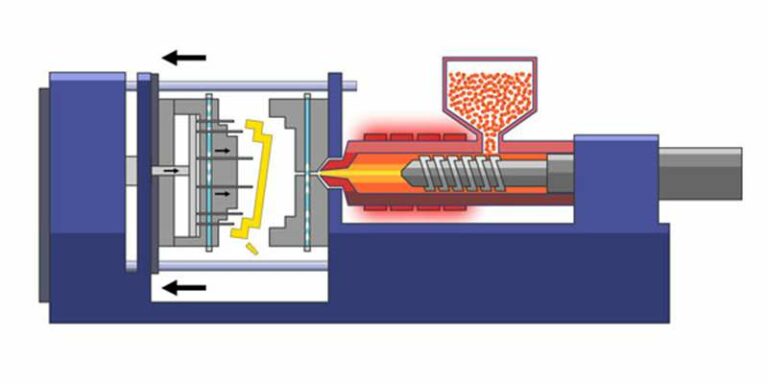The Effect of Plastic Injection Molding on Lowering Manufacturing Expenses and Waste
The Effect of Plastic Injection Molding on Lowering Manufacturing Expenses and Waste
Blog Article
Understanding the Basics of Plastic Injection Molding Procedures
Plastic shot molding offers as a cornerstone of modern manufacturing, supplying a methodical approach to producing complex components with precision. This procedure not just encompasses the basic steps of melting and injecting materials into molds but likewise includes a nuanced understanding of different affecting aspects, such as temperature level and stress. As sectors increasingly demand efficiency and quality, the ins and outs of this method end up being a lot more important. Discovering these crucial components can disclose exactly how even minor adjustments can result in significant improvements in manufacturing end results, elevating concerns regarding the potential for innovation in this established process.
What Is Plastic Shot Molding?
Plastic shot molding is a widely made use of production procedure that transforms polycarbonate and thermosetting materials right into accurate and intricate shapes. This method is preferred for its ability to create high quantities of identical components with remarkable precision, making it an important approach in various markets, consisting of auto, consumer products, and clinical tools.
The process includes thawing the picked plastic product and injecting it into a mold under high stress. The mold and mildew, designed to the specs of the wanted component, permits the molten plastic to form as it strengthens and cools. As soon as the product has solidified, the mold is opened, and the finished part is ejected.
Plastic shot molding provides numerous benefits, consisting of reduced waste, consistency in production, and the capability to integrate complex styles that might be testing with various other producing techniques. Furthermore, it sustains a wide series of materials, each supplying special homes that can be tailored for particular applications. As markets continue to innovate, plastic shot molding continues to be at the center, making it possible for the growth of innovative items that satisfy developing consumer demands.
The Shot Molding Refine
The injection molding process is a sophisticated strategy that entails numerous crucial stages to produce high-quality plastic components. Plastic pellets are fed right into a warmed barrel where they are thawed right into a viscous fluid. This molten plastic is then infused under high stress into a precision-engineered mold, which shapes the material into the desired type.
Once the mold is loaded, the plastic is allowed to cool and strengthen, taking the form of the mold and mildew tooth cavity. Cooling time is essential, as it affects the cycle time and the last properties of the shaped part. After enough air conditioning, the mold opens, and the ended up element is expelled utilizing ejector pins.

Products Made Use Of in Shot Molding
Different products can be made use of in the shot molding process, each offering special homes that deal with certain applications. The most frequently made use of products include thermoplastics, thermosetting plastics, and elastomers.

Thermosetting plastics, like epoxy and phenolic materials, undertake a chemical modification throughout the treating procedure, resulting in a stiff, stringent structure. These products are ideal for applications needing high heat resistance and architectural stability, usually made use of in auto components and electrical insulators.
Elastomers, including silicone and rubber-based products, give versatility and strength. Their unique buildings make try this site them ideal for applications that demand elasticity, such as gaskets and seals.
In addition, specialized products like bio-based plastics and composites are acquiring grip for their ecological benefits and boosted efficiency features, broadening the extent of injection molding applications in different markets. Recognizing the buildings of these products is crucial for selecting the suitable type for certain tasks.
Advantages of Injection Molding
Shot molding stands out as a highly efficient production process that provides various advantages for producing complex get rid of accuracy. Among one of the most significant advantages is the capacity to develop complex designs that would certainly be impossible or challenging to achieve with various other approaches (Plastic Injection Molding). The process enables in-depth functions and limited resistances, guaranteeing premium components
In addition, shot molding is known for its quick production capabilities, making it an excellent option for high-volume manufacturing. As soon as the mold is created, components can be created quickly, lowering lead times and raising general productivity. This performance not only decreases production prices but additionally offers an one-upmanship in the market.
The adaptability of materials utilized in injection molding even more boosts its charm. A large range of thermoplastics and thermosetting polymers can be used, allowing makers to select materials that ideal meet their certain requirements, including toughness, heat, and adaptability resistance.
Additionally, the process minimizes read waste, as excess product can frequently be reused and recycled. This sustainability facet contributes to a minimized ecological influence, making shot molding a responsible manufacturing option. Generally, the benefits of shot molding make it a recommended method for many markets.
Aspects Influencing Item Top Quality
While numerous factors can influence product quality in injection molding, comprehending these aspects is vital for attaining optimum outcomes. Secret elements include material choice, refining specifications, and mold style.
Material selection plays an important role, as different polymers exhibit unique buildings that influence flowability, toughness, and thermal security. Insufficient material choice can bring about issues such as bending or incomplete filling.
Processing criteria, consisting of temperature level, pressure, and cycle time, have to be carefully regulated. Variants in these setups can result in disparities partially measurements and surface coating. Excessively high temperatures might cause degradation of the polymer, while insufficient pressure can result in brief shots.
Mold layout is similarly important, as it establishes the flow of the molten plastic and the cooling procedure. Improperly developed mold and mildews may bring about irregular air conditioning prices, leading to residual stress and anxieties and dimensional mistakes.

Conclusion
To conclude, plastic injection molding works as an essential production procedure that allows the effective production of premium elements. Mastery of the shot molding procedure, including the understanding of materials and the influence of numerous aspects on product high quality, is important for achieving optimum outcomes. The advantages of this method, such as cost-effectiveness and layout adaptability, additional underscore its significance throughout several industries, strengthening its condition as a favored choice for high-volume manufacturing.
Plastic injection molding offers as a foundation of modern production, supplying a methodical strategy to creating complex parts with precision.Plastic shot molding provides numerous benefits, consisting of minimized waste, consistency in manufacturing, and the capability to include elaborate layouts that may be testing with other making methods (Plastic Injection Molding). As sectors continue to introduce, plastic injection molding stays at the leading edge, allowing the advancement of advanced items that fulfill progressing customer demands
The shot molding procedure is an advanced strategy that involves a number of key phases to generate premium plastic components.In final thought, plastic shot molding serves as an important production process that makes it possible for the efficient production of top notch components.
Report this page